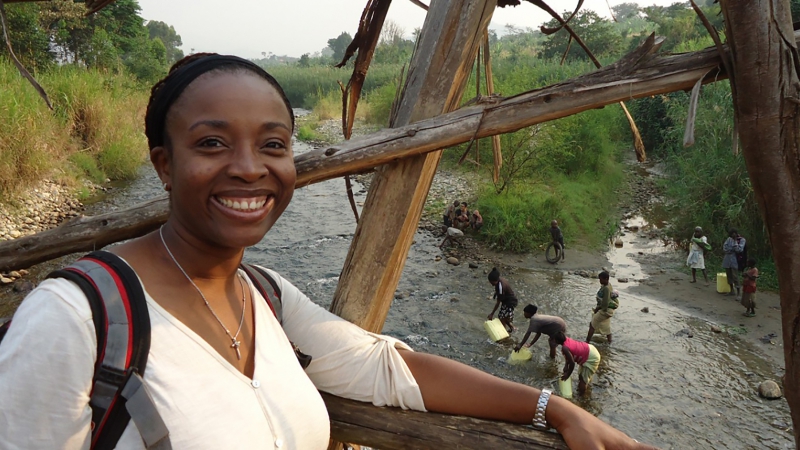By Jack Carew, MPH
A key component of anyone’s journey as a student in a Master of Public Health program (MPH) is building your public health network. Whether you have been working in the field for years or are freshly learning the difference between a case-control and a cross-sectional study, participation in an MPH program represents a unique opportunity to expand your professional network. Not only are you surrounded by a community of other students who will become your coworkers and professional peers in a matter of months or years, but you can also avail yourself of the wealth of career exploration resources offered by the University of Vermont Professional and Continuing Education as well as the Robert Larner College of Medicine. The network you build during your time as a student at UVM will supplement your existing relationships and provide a springboard for future employment and opportunities for collaboration.
While a strong public health network is a central aspect of a successful public health career, students can sometimes struggle to get started reaching out to their peers professionally. The following guide presents steps that anyone can take to expand or strengthen their public health network, whether an undergraduate, graduate student or professional.
Strategically Plan to Build Your Public Health Network
Identify Your Interests
Are you extremely motivated by one aspect of public health, whether it be health policy, legislation impacting health issues, designing epidemiological studies, using statistics to draw robust conclusions about large groups of people, or leading teams of public health professionals? Or are you interested in a specific aspect of health like cancer, non-communicable diseases, infectious diseases, or environmental health? Do you know you want to work in a school, at an NGO, in the federal government, or somewhere else? Having a clearly defined idea of what your interests are can help you to decide the kinds of individuals with whom you would like to network. If you don’t have any idea of what you want to do, conversations with individuals in public health fields can help you to envision where you’d like to be in the future.
Identify Your Goals
A clear idea of your short- and long-term goals can help to guide the time you spend networking. For example, a short-term goal might be determining positions of interest after completing your MPH or determining what fellowships are available for MPH students. In the former case, you might want to connect with a variety of people to learn about different careers and who might be hiring. In the latter case, you might want to target your search to fellowship directors and peers who have completed fellowships. Because fellowships can be difficult to find, asking peers about projects they have completed in the past, or whether they have any friends who have completed any fellowships in the past, can be the best way to find out about poorly advertised opportunities.
Make a List of Individuals of Interest
Begin with people with whom you may have mutual connections already. For example, family members or classmates may have colleagues or peers working in public health with whom they could put you in touch. It can often be easier to set up a conversation with someone when someone else introduces you. Mutual connections may come from family, friends, school, work, or other networks, so think broadly.
After creating this initial list, use the internet to research individuals at organizations and companies of interest. Here, the level of seniority is key when choosing people with whom you would like to speak. Generally, people are more likely to speak to you if you are at or above their seniority level, though this does not always hold true. So, if you are an undergraduate student taking MPH courses, it may be more difficult to set up a meeting with the CEO of a multi-national public health company than it would be to speak with a junior associate at that company. Oftentimes, people closer in seniority to you will also have better advice or feedback for you than individuals with much more or much less experience than you.
Actively engage your classmates and friends in your online programs. Everyone has a wealth of experiences, and you never know when you may meet someone who has interests that overlap strongly with yours. Schedule Zoom and MS Teams calls with your classmates if not in an in-person program.
While you may initially want to connect with individuals with experiences and interests closely related to your own, don’t forget that it can also be helpful to have contacts who do not have your specific expertise or interest. For example, you have an environmental health scientist in your network who does not have strong writing skills; she contacts you and asks you to collaborate with her to write an OpEd about the neurological effects of water pollution.
Identify Projects as a Talking Point
It’s a great jumping-off point for a conversation to say “I was involved with a project studying the health effects of PM2.5 several years ago. I’d love to learn more about your work on air pollution.” Showing that you have interests or experiences related to things that the individual with whom you are contacting has worked on can help to create an initial bond.

Consider Creating an Elevator Pitch
Myriad online resources give detailed instructions for constructing an elevator pitch. Some good ones are here and here. Essentially, an elevator pitch in the context of networking is a one-minute to ninety-second description of who you are, what you’ve done, and why you are interested in speaking with the individual with whom you are speaking.
Building Connections in Your Public Health Network
Reach Out to Individuals of Interest
After creating your list of individuals with whom you’d like to speak, think about the best ways to reach out to them. For someone that you know through a mutual connection, it might be worth asking that connection if they would be willing to introduce you to your potential contact via text or email.
For individuals with whom you have no existing contact, a cold email can be the best first step for building a relationship. A cold email should briefly introduce yourself and give your reason for reaching out to the recipient. It should close by asking to set up a short video or audio call with the recipient in the next couple of weeks, during a time that is convenient for the recipient. It should be brief and sent from an institutional email if possible. Your “ask” in such an email can be as general as asking if the recipient might be willing to speak about their career or research interests, or as specific as asking about a specific fellowship, internship, or open position.
Attaching your resume to a cold email can give the recipient a chance to learn more about you than what you briefly present in the email.
After sending the initial cold email, it can help to add the recipient on LinkedIn, mentioning in your invitation that you sent them an email and are interested in learning more about them. For example, you might say, “Hi [name]. I came across your profile and would love to ask you about your experience as a […]. I just sent you an email with my background.”
While sending such an email or LinkedIn invitation may feel intimidating, people generally love to talk to students about their past experiences.

Attend Events
Attending conferences, agency meetings, lecture series, and public health events is a great way to place yourself in the same physical or virtual space as other interesting, engaged public health professionals. Reach out to local universities to see if they are having talks about public health issues of interest. After attending in-person or virtual lectures, introduce yourself to the speaker and ask to schedule a follow-up call with more questions from the talk. Explore the American Public Health Association student member benefits and join the UVM Graduate Public Health Program LinkedIn page.
Reach out to university professors to ask if they’re looking for research assistants or if there are other ways to get involved in public health research and practice.
Use the Internet
There is a wealth of information out there about different programs, fellowships, and careers in public health. It is often not easy to find and will not always be on the first page of a Google search. Open lots of tabs and dig deeply into university, federal agency, private foundation, professional association, and other networks.
University of Vermont Resources Help to Build Your Public Health Network
- Reach out to the alumni director to inquire about alumni working in related fields or who have completed public health projects in which you are interested.
- Reach out to the career advisor(s) to learn about their networks and about careers/fields of interest.
- Speak with the fellowships directors to see if there are programs in which you might be able to participate.
- Career resources offered by UVM’s Public Health program are available to all UVM Master of Public Health graduates. Explore the career resource center today.



